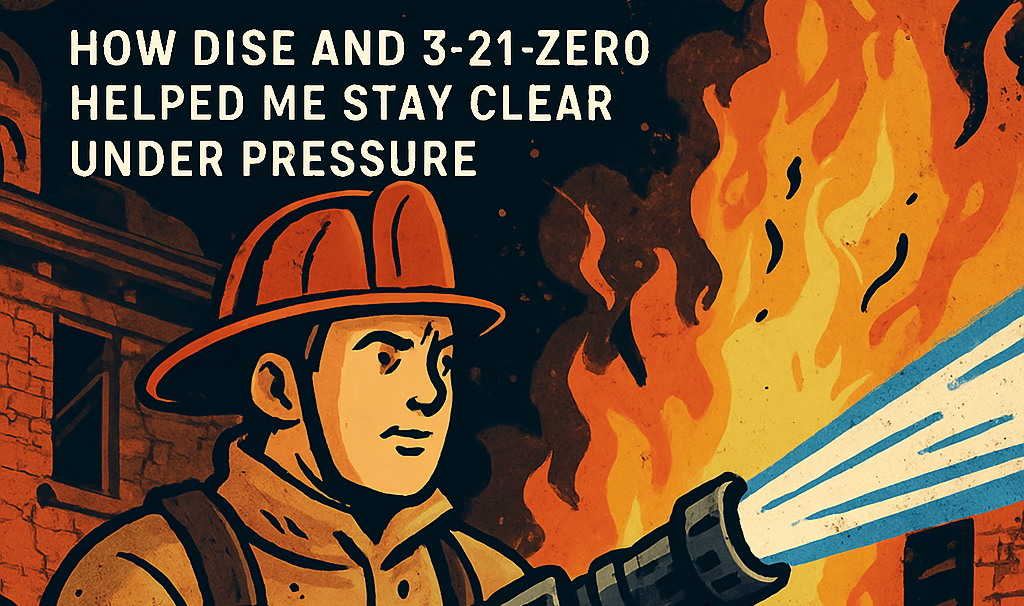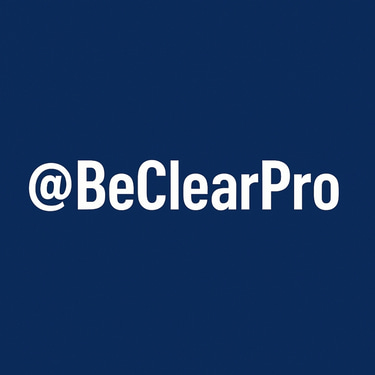FREE digital guide - see RESOURCEs section
When Resources Run Thin - 27 July 2025
2025
Dean Constantine
7/27/20254 min read


Ever had a period where every ounce of your clarity and resilience has been tested?
With staff on holiday, courses, and sickness thinning the ranks, I found myself juggling shifting priorities, issues, and short-notice requests. It wasn’t just a matter of getting things done - it was about staying focused on what truly mattered. And that’s where DISE came in.
The Challenge: Putting together the prioritisation puzzle
Staff shortages created a vacuum of support - I had limited support for the period, so I had to scale down to the most urgent and important tasks or risk limited impact for everything!
Issues emerged unpredictably, demanding immediate attention - and they kept coming, so urgent and important kept hitting me like a freight-train.
Priorities shifted daily, often hourly - just when you think you're getting through the priority jungle, the DISE machete needed to be sharpened again.
Delegation was limited - not by willingness, but by capacity - things really needed to be urgent and important to be worthy of my time!
The Framework That Held Me Together: DISE - Deadlines, Information, Sizing, Eisenhower Matrix - became my anchor:
DISE came into its own. I mainly use it as a start of day task which provides clarity of what truly matters for the day or period I'm focused on. But when you're in an ever changing environment, it also acts as a great reference point. As new pulls on my time emerge, I look back over what has already been prioritised and take a momentary pause to reflect on the new item, the DISE factors, and where the new item now lands in terms of priority. The steps.
Deadlines: I triage tasks based on urgency and impact. What is the deadline on this item - does it need my attention right now or is it going to become a problem very soon?
Information: I clarify what is actually needed before acting. This avoids going down rabbit holes, wasting time, effort, potential rework. Losing time or rework really isn't needed when time is already a scarce resource!
Sizing: How big is the piece of work? It might not be immediately needed, but if it's needed in say 2 days and it's large - maybe I do need to factor time in soon. When something is large, I also look to break tasks into manageable chunks to avoid overwhelm and get the most important or must complete tasks done first.
Eisenhower Matrix: I continually use this as my guiding light, “Is this urgent? Is this important?” or if not, which quadrant will it fit in (Defer, Delegate, Drop it!). Delegation was very difficult on this occasion due to scarce resources, but the bar was very high to go into my Urgent & Important quadrant.
On this occasion, it wasn’t just theory - it was survival, and the DISE method stood up to the task. No dropped balls, the plates remained spinning and there was a sense of achievement as the week ended.
Timeboxing + 3-21-Zero: Guarding My Focus
Ben Meer’s 3-21-Zero method is a game-changer and its power comes into full-effect in situations when your time becomes scarce. Email inboxes can waste so much time, by constantly checking, causing you to task-switch and plummeting your productivity levels to minimal numbers. So what is it, and how does it help.
3 sessions a day: I schedule three focused email blocks in the day. One in the morning, one after lunch, and one at the end of the day.
21 minutes each: They should last roughly 21-minutes. This is enough time to triage, not drown or remove time for what matters. If you add "OHIO" into the mix (Only Handle it Once), it becomes even more effective. Don't dwell, deal, designate, delete and move forward.
Zero inbox goal: I aim to clear the decks to reclaim mental bandwidth. Having a targeted folder structure aligned with the Eisenhower Matrix can work wonders here. I'll cover this in a later blog.
Combined with Timeboxing (designating periods of time for focused work), this helped me protect deep work time and avoid the email vortex.
Cognitive Backing: Insights from Brain by Elizabeth Ricker - Elizabeth Ricker’s Brain: An Owner’s Guide reminded me that:
Cognitive clarity isn’t just a luxury - it’s a skill.
Mental fatigue compounds when we lack structure - In periods of time-scarcity, you must be clear on what needs to done versus what can wait.
Neuroplasticity thrives on systems that reduce decision fatigue - Habits are key in productivity, reduce strain by using methods like DISE which are easily repeatable and stand up to the strain of prioritising.
Her work validates the importance of frameworks like DISE and 3-21-Zero in maintaining mental performance under pressure. Constantly making decisions causes fatigue, so keeping it simple and repeatable really is the way to go.
Reflections & Takeaways
When resources are stretched, clarity becomes your currency.
DISE isn’t just a productivity tool - it’s a resilience framework. Use it daily, or as a go to in times of high workload and stress.
Timeboxing and 3-21-Zero aren’t only about control; they liberate you to get on with what truly matters.
Cognitive tools like those in 'Brain' (Ricker, 2025) help us stay sharp when the world gets noisy.
For similar weekly content, dropping each Sunday, make sure you subscribe or come back next week for my next productivity musings. You can also follow on TikTok: @BeClearPro and add comments below.
Empowering smarter decision-making for effective outcomes.
Contact
Email direct: feedback@beclearpro.co.uk
© 2025. All rights reserved.
